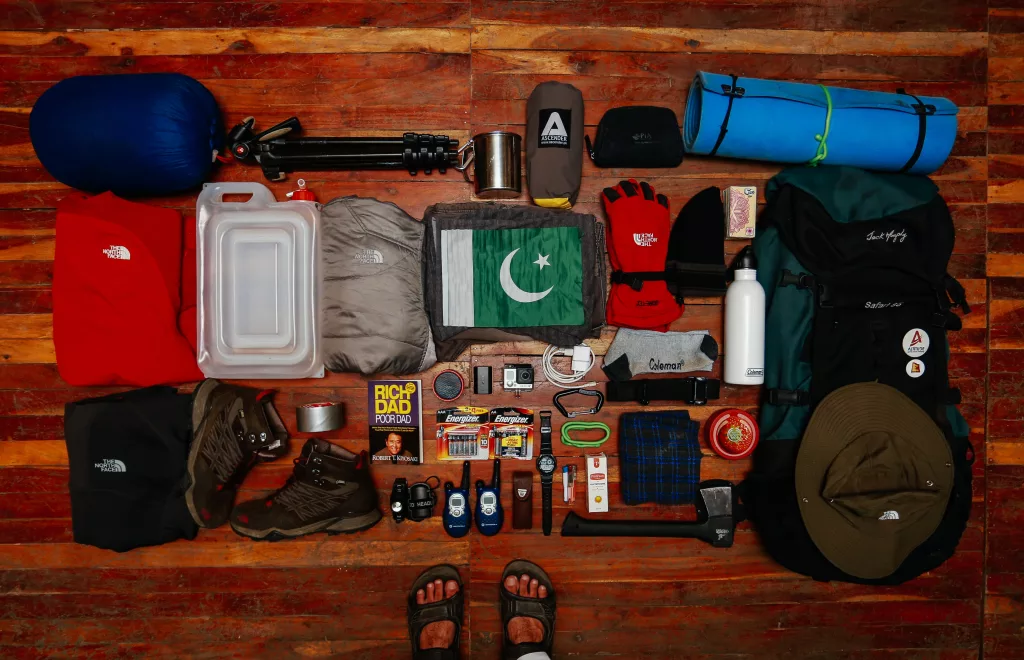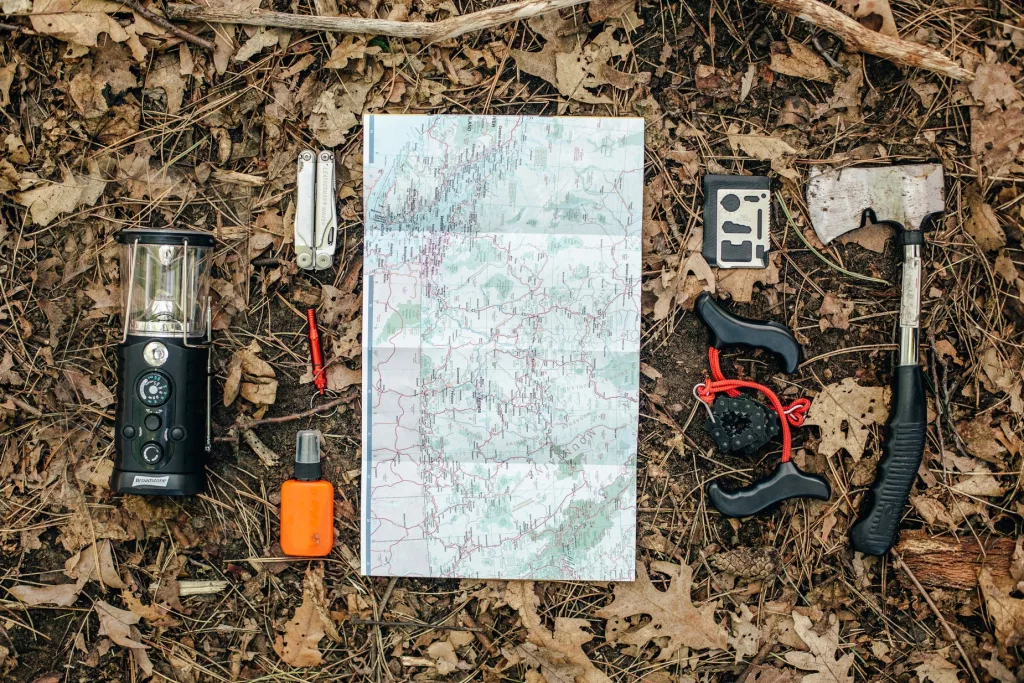Introduction
Navigating the Untamed Wilderness
Picture yourself on an expedition into the wilderness. Endless forests, mountains like spears against the sky and streams murmuring in the distance are waiting for you. But amidst this breathtaking beauty lies a stark reality: nature’s unpredictability. The weather can change with lighting speed, the trails disappear and there are unexpected obstacles to be faced. It is at this point that a wilderness survival kit can prove its usefulness.
The Importance of a Wilderness Survival Kit
See your wilderness survival kit as a lifeline in the realm of uncertainty. As a toolset the producers bequeathed to their readers, it’s an assemblage of life-or-death essentials designed to get you through unpredictable circumstances and secure your basic needs in order to help insure your safety. Not a race to collect luxury items but about practicality and preparedness.
Adaptability for Diverse Environments
Nature appears in a variety of guises. Thus should your wilderness survival kit be versatile. A trekker in the Amazon rainforest, for example, will have far different requirements than a hiker in the Himalayas. Thus it is important to adapt the contents of your kit according to the environment you will be facing. Take such things as climate, terrain, the length of your route and potential dangers into account. If equipment can be carefully selected on these terms, you’re far more likely to find yourself prepared for the unique challenges of your own chosen wilderness adventure.
Next, we’ll take a closer look at each essential element in your all-important wilderness survival kit.
Essential Gear and Tools: Your Fortress in the Wild
Having stated that a wilderness survival kit is an essential piece of equipment, let us examine what the core wilderness gear should be. From them you’ll learn how to surpass obstacles, seek solace and remain protected in the face of nature.
Cutting Tools: Carving Your Way to Survival
Multipurpose Survival Knife:
A multipurpose Survival Knife This explains a lot about its popularity as your trusty wilderness companion. Pick one with a full tang for unrivaled durability and an easy, comfortable feel. Seek out such qualities as a serrated edge to handle hard materials, and gut hook which helps in hunting or fishing; firestarter rod or flint striker for versatility. But don’t forget about knife safety training before setting off for the wild.
Compact Folding Saw:
Fallen branches and firewood are cut into manageable pieces with a sturdy folding saw. Prefer one with a quick-release function for ease of use and locking blade safety. A replaceable blade allows lasting use, while the small size keeps weight and space down in your pack.

Shelter Building Materials: Weathering Nature’s Wrath-Wilderness Survival Kit
Lightweight Tarp or Emergency Blanket:
Locating proper shelter is a prime consideration for survival. A lightweight tarp provides protection from sun, rain and wind all at once. Think about picking one with grommets or tie-down points for good anchorage, and become familiar with various tarp layouts for flexibility in different weather conditions. The reflective emergency blanket can be especially useful in emergency situations, where it may serve as an insulation for warmth.
Paracord for Secure Structures:
The ultimate wilderness tool? Paracord is a tenacious cordage that’s light enough to carry and strong enough to be useful. Tie down your tarp, bind shelters, mend equipment, even make traps for food ﹘ there are many things they can do. The paracord must be high-tensile and have a minimum break strength of 550 pounds.
Fire-Starting Equipment: Kindling the Spark of Life
Waterproof Matches and Lighters:
Fire warms, illuminates and can be used to prepare meat or boil drinking water. Bring a pack of matches (storm-proof, strike-anywhere or otherwise) and one lighter as a backup. Store them in waterproof boxes, so that they are always on hand when required.
Firestarter for Adverse Conditions:
But even the best laid plans may fall prey to damp surroundings or wind conditions that prove tough on conventional fire-making techniques. Because a ferrocerium firestarter produces sparks through friction, it will work in any weather. It’s light, resilient, and easy to maintain. An essential for the survival kit?
But don’t forget, you should get familiar with how to start a fire using your selected kindling before you head off into the wild.
These are only the beginning of assembling your own complete wilderness survival kit. And watch for our coming series on basic survival skills-including navigation, first aid, water purification, signalling equipment and more-to provide you with everything you need to know before setting out into the natural world with eyes wide open.
Navigation and Signaling: Finding Your Way and Sharing Your Call-Wilderness Survival Kit
No matter how experienced an adventurer you may be, no one doubts that getting lost in the wilderness is a genuine risk. This is where the essential pair of navigation and signaling comes in, so you can maintain your orientation and point out where to send rescuers.
Compass and Map: Charting Your Course Without Technology
Navigating Beyond the Smartphone:
In this day and age of technology, all you have to do is hold a device in your hand and press the button. However, over-reliance on GPS for guidance back in the wilderness can be dangerous. Batteries go dead, signals wane and sudden terrain panics you. That’s why a good old-fashioned compass and topographical map are still your best buddies in the bush.
Learn how to use a compass effectively:
• Master basic map features: Learn to decipher symbols, scales and legends so as to correctly read your environment.
• Triangulate your position: Estimate your position from landmarks, compass bearings and map features.
• Plan your route: Before departing, plan out your route according to the map, taking account of distance and elevation variations as well as obstacles.
Topography and Landmarks: Nature’s Guiding Lights:
Besides maps and compasses, the greatest navigational indicator is nature. Understand topographical terms such as ridges, valleys and the flow of runoff. Study the sea and mountains to be aware of landmarks such as high spots, rivers, unusual rock formations which can serve you as guides.

Signaling Devices: It’s a case of needing to be seen and heard.
When you are lost and alone, being able to signal for help can be especially important. The tools to attract attention and direct rescuers to your location should be stored in a valid survival kit.
Whistle and Signal Mirror:
A shrill whistle is a useful method of signaling for help over short distances. Select one with a high-pitched tone and clear sound, and practice specialized signalling patterns such as long whistles or trills of varying durations.
The signal mirror sends flashes of reflected sunlight over long distances, and may be used in open country to attract the attention of rescuers. Learn how to tilt the mirror at just the right angle so that the sun’s rays shine on those willing to help.
Emergency Signaling Techniques:
In addition to certain tools, creativity in making use of existing material can also draw a crowd. Using the surrounding rocks or vegetation to build large SOS symbols, burning fires in certain patterns, using colored cloth as signals for help ﹘ any of these methods can be lifesaving.
But before you go out into the wilderness, remember that basic skills of navigation and signaling are a prerequisite to staying safe and keeping your peace of mind.
The following section explores the essential world of first aid and wilderness medicine, giving you expertise with which to face today s minor injuries and ailments. Stay tuned!
First Aid and Wilderness Medicine: Your Body’s First Line of Defense-Wilderness Survival Kit
But no matter how well prepared you are, there can still be unexpected minor injuries or illnesses in the wilderness. So it is particularly important to carry a well-equipped first-aid kit and have some knowledge of wilderness medicine.
Essential First-Aid Supplies:
• Bandages and wound dressings: Come in various sizes to treat cuts, scrapes and burns.
• Antiseptic wipes and ointment: For cleaning wounds and preventing infection.
• Pain relievers and anti-inflammatory medication: Take for headache, muscle ache and fever.
• Anti-diarrhea medication and rehydration tablets: Against typical stomach ailments and electrolyte imbalance.
• Tweezers and sterile gauze: Remove splinters, treat minor wounds.
• Safety pins and duct tape: These can be used to close wounds or repair gear.
Wilderness Medicine Essentials:
• Wound care: Master correct cleaning, disinfecting and bandaging procedures.
• Blister management: To prevent and treat blisters, use moleskin or moleskin pads.
• Treating sprains and strains: The RICE (Rest, Ice, Compression, Elevation) protocol for soft tissue injuries.
• Recognizing and treating hypothermia and hyperthermia: Knowing what to do and how when confronted with the symptoms of cold or heat?
• Basic knowledge of venomous bites and stings: Familiarity with local risks and simple first-aid measures.
Remember that if you’ve suffered any major injuries or illnesses during your time in the wilds, you should always get professional treatment immediately after returning home.

V. FAQs: Conquering Your Wilderness Concerns-Wilderness Survival Kit
Now that we’ve explored the center elements of a complete desolate tract survival kit, permit’s deal with a few not unusual questions and concerns that can rise up:
Q: What must I % for different environments?
A: Adapt your package to the precise weather, terrain, and period of your journey. Consider elements like temperature, precipitation, flora and fauna dangers, and access to water assets. For instance, a barren region trip would possibly require more sun safety and water purification pills, while a iciness snow hike might prioritize insulation and traction tools.
Q: How lots weight need to my kit be?
A: Aim for a stability among preparedness and practicality. A heavier kit would possibly offer extra options, however it can also weigh you down and gradual you down. Generally, a 10-15% percent weight is considered viable for maximum day trips.
Q: What are some felony considerations for wearing certain gadgets?
A: Research nearby rules concerning particular equipment or objects in your kit. For instance, certain knives or fireplace starters would possibly have regulations in certain regions.
Q: How regularly have to I update my kit?
A: Regularly check your kit’s contents for expired objects, damaged tools, or lacking resources. Replace used gadgets right away and bear in mind training simple skills like fireplace-beginning or compass navigation to make certain your preparedness through the years.
Remember, guidance is key to taking part in a secure and a hit barren region adventure. By equipping your self with the proper information, equipment, and attitude, you could confidently navigate the challenges of nature and include the beauty and excitement of exploring the wild.
